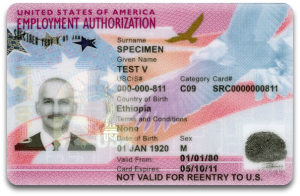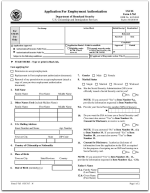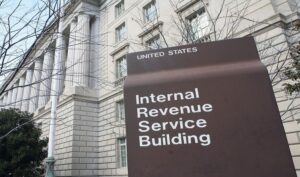
Many people want to come to the United States to work, but not everyone can. Foreign nationals must have employment authorization before accepting work in the United States. In fact, both employees and employers may be subject to fines or imprisonment for illegal employment arrangements.
To work in the United States, a foreign national must have one of the following:
- A Permanent Resident Card (also known as a Green Card)
- An Employment Authorization Document (U.S. work permit) or
- An employment-related visa which allows you to work for a particular employer.
When hiring a new employee, all U.S. employers must request proof of the employee’s right to work in the United States. Foreign nationals, such as those who have been admitted as permanent residents, granted asylum or refugee status, or admitted with work-related nonimmigrant visas, may have employment authorization as a direct result of their immigration status. Other foreign nationals may need to apply individually for employment authorization.
RECOMMENDED: U.S. Work Visa Types for Foreign Nationals
U.S. Work Permit
In the United States, a work permit is formally known as an employment authorization document (EAD). U.S. Citizenship and Immigration Services (USCIS) issues this photo identity document to certain foreign nationals who are authorized to work in the United States under the terms of their visa. Typically work permits are valid for one year. However, they may be valid longer for some categories.

Who Qualifies for a Work Permit
As explained above, you’ll need a U.S. work permit to accept employment if you don’t already have a green card or work-related visa. Only certain individuals in specific immigration statuses are eligible to apply for a work permit. The following eligibility categories qualify for employment authorization:
| Adjustment of Status |
|---|
| (c)(9) – Adjustment Applicant |
| (c)(16) – Adjustment Applicant Based on Continuous Residence Since January 1, 1972 |
| Renewal EAD for National Interest Waiver Physicians |
| Deferred Action Categories |
| (c)(14) – Deferred Action |
| (c)(33) – Deferred Action for Childhood Arrivals (DACA) |
| Asylee/Refugee Categories (including spouses and children) |
| (a)(5) – Asylee (Granted Asylum)) |
| (c)(8) – Asylum Applicant (with a pending asylum application)Who Filed for Asylum on or After January 4, 1995) |
| (a)(4) – Paroled as a Refugee |
| (a)(3) – Refugee |
| Eligible Dependents of Diplomatic Missions, International Organizations, or NATO |
| (c)(1) – Dependent of A-1 or A-2 Foreign Government Officials |
| (c)(4) – Dependent of G-1, G-3 or G-4 Nonimmigrant |
| (c)(7) – Dependent of NATO-1 Through NATO-6 |
| Employment-Based Nonimmigrant Categories |
| (c)(17)(ii) – B-1 Nonimmigrant Domestic Servant of a U.S. Citizen |
| (c)(17)(iii) – B-1 Nonimmigrant Employed by a Foreign Airline |
| (c)(17)(i) – B-1 Nonimmigrant Who Is the Personal or Domestic Servant of a Nonimmigrant Employer |
| (a)(17) – Spouse of an E-1/E-2 Treaty Trader or Investor |
| (c)(12) – Spouse of an E-2 CNMI Investor |
| (a)(18) – Spouse of an L-1 Intracompany Transferee |
| (c)(26) – H-4 Spouse of an H-1B Nonimmigrant |
| Family-Based Nonimmigrant Categories |
| (a)(6) – K-1 Nonimmigrant Fiancé(e) of U.S. Citizen or K-2 Dependent |
| (a)(9) – K-3 Nonimmigrant Spouse of U.S. Citizen or K-4 Dependent |
| (a)(13) – Family Unity Program |
| (a)(14) – LIFE Family Unity |
| (a)(15) – V-1, V-2 or V-3 Nonimmigrant |
| Foreign Students |
| (c)(2)(a) – F-1 Student Seeking Pre-completion Optional Practical Training |
| (c)(3)(B) – F-1 Student Seeking Post-completion Optional Practical Training |
| (c)(3)(C) – F-1 Student Seeking 17-month Extension for STEM Students |
| (c)(3)(ii) – F-1 Student Offered Off-Campus Employment by Qualifying Organization |
| (c)(3)(iii) – F-1 Student Seeking Off-Campus Employment Due to Economic Hardship |
| (c)(5) – J-2 Spouse or Minor Child of an Exchange Visitor |
| (c)(6) – M-1 Student Seeking Practical Training After Completing Studies |
| Nationality Categories |
| (a)(8) – Citizen of Micronesia, the Marshall Islands, or Palau |
| (a)(11) – Deferred Enforced Departure (DED)/Extended Voluntary Departure |
| (a)(12) – Temporary Protected Status (TPS) under 8CFR 244 |
| (c)(19) – Temporary Protected Status (TPS) under 8CFR 244.5 |
| (c)(10) – NACARA Section 203 Applicants Who Are Eligible to Apply for NACARA Relief With USCIS |
| (c)(2) – Dependent of TECRO E-1 Nonimmigrant |
| Other Categories |
| (a)(7) – N-8 or N-9 Nonimmigrant |
| (a)(10) – Granted Withholding of Deportation or Removal |
| (c)(10) – Applicant for Suspension of Deportation |
| (c)(11) – Paroled in the Public Interest |
| (c)(18) – Final Order of Deportation |
| (c)(24) – LIFE Legalization Applicant |
| (a)(16) – T-1 Nonimmigrant |
| (c)(25) – T-2, T-3 or T-4 Nonimmigrant |
| (a)(19) – U-1 Nonimmigrant |
| (a)(20) – U-2, U-3, U-4 or U-5 |
| (c)(31) – VAWA Self-Petitioners |
Apply for a U.S. Work Permit
To apply for a U.S. work permit, eligible applicants must file Form I-765, Application for Employment Authorization, with USCIS. Each eligibility category above may have separate requirements for supporting documentation. Proof of eligibility is a critical component of the supporting documents.
Form I-765

You may download Form I-765, as well as instructions for preparing and submitting the application, directly from USCIS.gov. Applicants that want additional reassurance that they’re doing everything correctly can use CitizenPath to prepare an I-765 application. Immigration attorneys designed CitizenPath’s low-cost software to make the process easier and help eliminate common mistakes that create delays and rejections.
Supporting Documents
Generally, applicants must provide evidence of eligibility along with the Form I-765. For example, a VAWA self-petitioner would need to provide a photocopy of the I-360 approval notice (among other documents). An asylee would submit a copy of the I-760 approval notice or court order granting asylum status. When filing Form I-765, Application for Employment Authorization, most individuals will submit:
- USCIS fees
- Copy of Form I-94 Arrival/Departure Record
- Two passport-style photos
- Proof of eligibility
On the other hand, applicants that are applying for a work permit at the same time as the qualifying immigration status, won’t need to submit evidence. Instead, the I-765 gets submitted with the primary application. For example, adjustment of status applicants will submit Form I-765 with Form I-485, Application to Adjust Status. TPS applicants will submit the I-765 along with Form I-821, Application for Temporary Protected Status.
Applicants that prepare Form I-765 through CitizenPath’s service also receive personalized filing instructions. The filing instructions will be based on your specific situation and will explain exactly what documents to send with Form I-765.
RECOMMENDED: Immigration Papers: Your Proof of Immigration Status
About CitizenPath
CitizenPath provides simple, affordable, step-by-step guidance through USCIS immigration applications. Individuals, attorneys and non-profits use the service on desktop or mobile device to prepare immigration forms accurately, avoiding costly delays. CitizenPath allows users to try the service for free and provides a 100% money-back guarantee that USCIS will approve the application or petition. We provide support for the Employment Authorization Package (Form I-765), Green Card Renewal (Form I-90), and several other USCIS forms.
Want more immigration tips and how-to information for your family?
Sign up for CitizenPath’s FREE immigration newsletter and
SAVE 10%
on our immigration services



